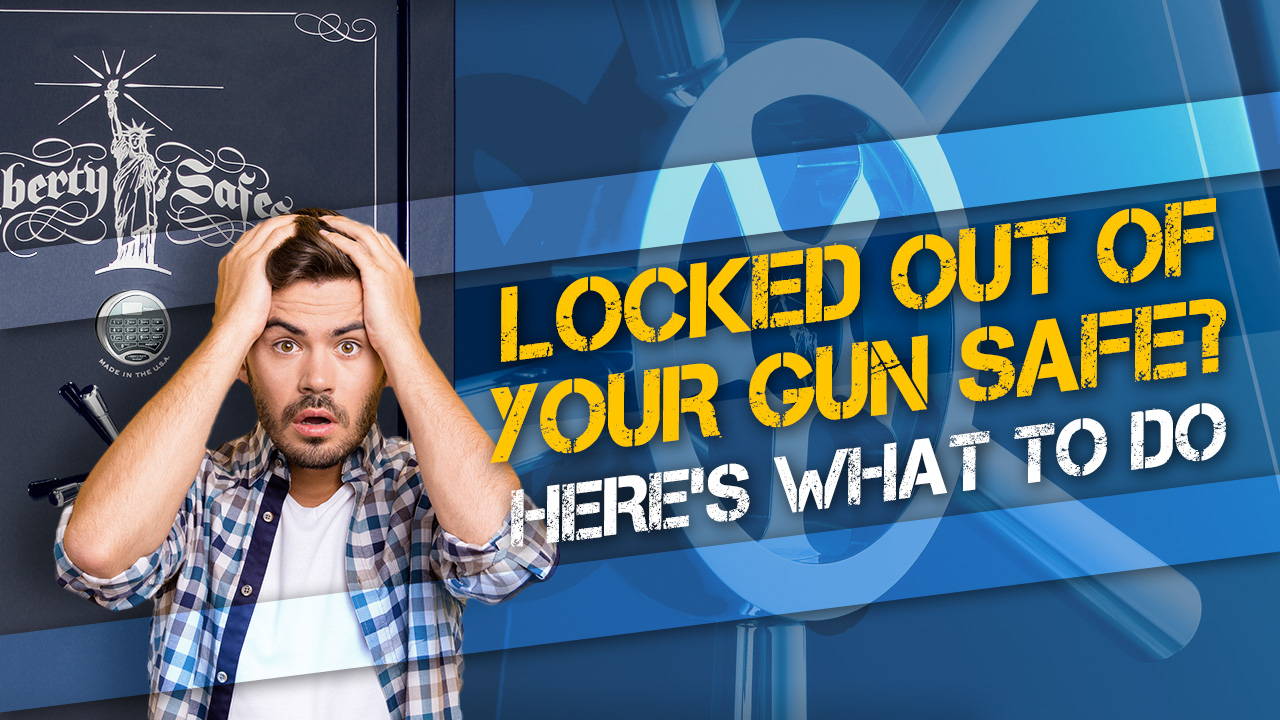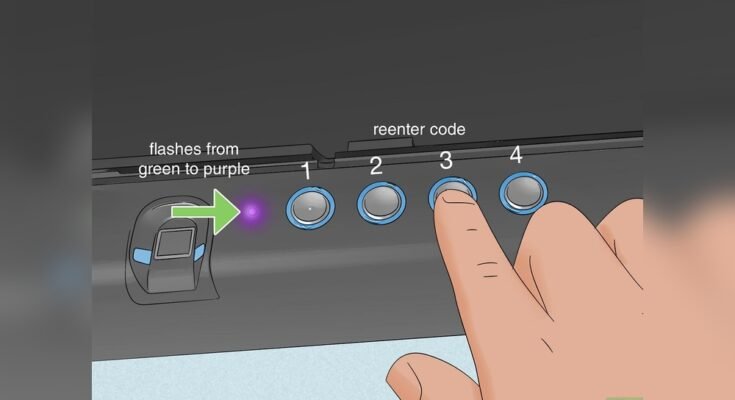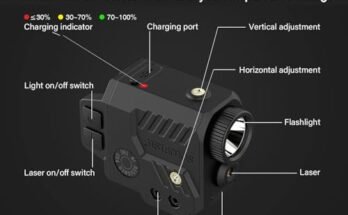If you own a pistol safe, you know how important it is to keep your firearms secure. But what happens if you forget your safe’s code or want to change it for extra security?
Learning how to reset your pistol safe code is easier than you might think. In this guide, you’ll discover simple, step-by-step instructions that anyone can follow. By the end, you’ll have full control over your safe’s access, giving you peace of mind and protecting what matters most.
Ready to take charge of your safe’s security? Let’s get started.
Types Of Pistol Safes
Pistol safes come in different types. Each type offers unique features and security levels. Knowing the types helps you understand how to reset the code.
Some safes use simple mechanical locks. Others have advanced electronic systems. Both have pros and cons depending on your needs.
Mechanical Vs Electronic Safes
Mechanical safes work without batteries or power. You turn a dial or press buttons to open them. These safes are reliable and less likely to fail.
Electronic safes use a keypad and digital code. They offer quick access and easy code changes. Batteries power these safes, so you must check them often.
Common Lock Mechanisms
Many pistol safes use combination dials, key locks, or push-button systems. Combination dials require turning a wheel to the right numbers. Key locks need a physical key.
Push-button locks let you enter a code on a keypad. Some safes have biometric locks that use fingerprints. Each lock type affects how you reset the code.

When To Reset Your Safe Code
Knowing when to reset your pistol safe code is important for safety. Codes protect your firearm from unauthorized access. Resetting the code keeps your safe secure and up to date. Certain situations make resetting necessary. Understanding these helps keep your gun safe.
Lost Or Forgotten Codes
Forgetting your safe code means you cannot open the safe. Resetting the code restores your access. Some safes have backup keys or reset buttons. If not, contact the manufacturer for help. Resetting ensures you can use your safe again.
Security Concerns
Changing your code regularly stops others from guessing it. If someone else knows your code, reset it fast. This keeps your gun away from unauthorized people. Resetting prevents theft or misuse of your firearm. Safety depends on controlling who knows your code.
After Gifting Or Selling
Giving your safe to someone else needs a new code. The old code might still be known by you. Reset the code before you hand over the safe. This protects the new owner’s privacy and security. A new code gives the safe a fresh start.
Tools Needed For Resetting
Resetting a pistol safe code requires a few basic tools. Having the right items makes the process smoother and safer. Prepare your workspace and gather these tools before starting.
Required Items
- Screwdriver set for opening the safe panel
- New batteries for the keypad, if needed
- Owner’s manual or reset instructions
- Pen and paper to write down the new code
- Flashlight for better visibility inside the safe
Safety Precautions
Ensure the pistol safe is empty before resetting the code. Remove all firearms and ammo first. Work in a well-lit area to avoid mistakes. Keep children and pets away during the process. Follow the manufacturer’s instructions carefully to avoid damage. Use tools gently to prevent scratching or breaking parts.

Resetting Electronic Safe Codes
Resetting electronic safe codes is a simple task that anyone can do. It helps keep your pistol safe secure and easy to access. Changing the code often improves your safe’s security. This guide shows the basic steps for most electronic pistol safes.
Locating The Reset Button
The reset button is inside the safe door. Open the safe first using your current code or emergency key. Look near the battery pack or on the back of the keypad panel. The button is small and may be red or black. Sometimes it is hidden to prevent accidental presses. Use a flashlight if needed.
Step-by-step Reset Process
Press and hold the reset button for about 5 seconds. Release the button when you hear a beep or see a light flash. Enter your new code on the keypad. Make sure to choose a code that is easy to remember but hard to guess. Press the “” or “” button to save the new code. Test the new code by locking and unlocking the safe. Repeat the process if the code does not work.
Resetting Mechanical Dial Safes
Resetting mechanical dial safes is a careful process. These safes use a dial to enter a code. Changing the code keeps your safe secure. The reset must be done step-by-step. Understanding the reset mechanism is key. This guide explains how to access and change the combination safely.
Accessing The Reset Mechanism
First, open the safe using the current combination. Look inside the door for a reset lever or button. Some safes have a small hole with a tool to press inside. Use a flashlight to see clearly. Move the lever or press the button to enter reset mode. The dial must be in the correct position. Follow the manufacturer’s instructions for your model. This step prepares the safe to accept a new code.
Changing The Combination
Turn the dial slowly to set the new numbers. Choose a combination that is easy to remember but hard to guess. Stop at each number precisely. After setting the new code, move the reset lever back to its original place. Close the safe door carefully. Test the new combination several times before locking. This confirms the new code works correctly. Write down your new combination and store it safely.
Troubleshooting Common Issues
Resetting a pistol safe code can sometimes bring unexpected problems. These issues can stop the process or cause confusion. Knowing common problems helps solve them quickly. This section covers usual troubles and ways to fix them. Follow these tips for smooth code resetting.
Safe Not Responding
A safe that does not respond can be frustrating. Check the batteries first. Weak or dead batteries cause no reaction. Replace them with fresh, high-quality batteries. Make sure the battery contacts are clean and tight. Press buttons firmly and wait a few seconds after each press. If the safe still does not respond, reset the safe’s power by removing batteries for a minute.
Code Reset Fails
Sometimes, the safe does not accept the new code. Confirm you follow the reset steps exactly. Use the correct master code or key for reset mode. Avoid pressing buttons too fast or too slow. Try entering the new code twice to ensure accuracy. If reset fails again, check the user manual for specific instructions. Some safes require a special sequence or extra steps.
Lockout Periods
After several wrong attempts, the safe may lock for a time. This lockout protects against forced entry. Wait patiently during this period. Do not try more codes as it may extend the lockout time. Use this time to check your reset steps or battery condition. After the lockout ends, carefully try resetting the code again.
Tips For Creating Strong Codes
Creating a strong code for your pistol safe is very important. A strong code keeps your safe secure. It stops others from guessing your code easily. Use simple rules to make strong codes. These tips help you protect your safe better.
Avoiding Common Patterns
Never use simple patterns like 1234 or 0000. Avoid repeating numbers such as 1111 or 2222. Do not use birth years or simple dates. These are easy to guess. Use random numbers that don’t form a pattern. This makes your code harder to crack.
Memorable But Secure
Pick a code you can remember without writing down. Use a mix of numbers that mean something only to you. Try using parts of phone numbers or addresses, but change some digits. This way, your code stays secret and easy to recall.
Maintaining Your Pistol Safe
Maintaining your pistol safe is key to keeping your firearms secure and accessible. A well-maintained safe works better and lasts longer. It also protects your investment and your safety. Simple care routines help avoid problems and keep your code secure.
Regular Code Updates
Change your safe code regularly to improve security. Use a code that is easy for you to remember but hard for others to guess. Avoid simple sequences like “1234” or birthdates. Changing codes every few months reduces the risk of unauthorized access. Always write down the new code and keep it in a safe place.
Safe Battery Replacement
Many pistol safes use batteries to power the lock mechanism. Check battery levels often to avoid lockouts. Replace batteries as soon as the low battery warning appears. Use high-quality batteries for longer life. Keep spare batteries nearby in case of emergency. Proper battery care ensures quick and easy access to your safe.

Frequently Asked Questions
How Do I Reset My Pistol Safe Code Safely?
To reset your pistol safe code safely, first open the safe using the current code or key. Locate the reset button inside. Press and hold it until you hear a beep, then enter your new code. Confirm the new code to complete the reset.
What Tools Are Needed To Reset A Pistol Safe Code?
Most pistol safes require no special tools to reset the code. Usually, you just need the existing code or key and access to the reset button inside the safe. Some models may require a small screwdriver to open the battery compartment.
Can I Reset My Pistol Safe Code Without The Original Code?
Generally, you cannot reset the code without the original code or key. If lost, you may need to contact the safe manufacturer or a locksmith. Some safes offer a master key or override method for such situations.
How Often Should I Change My Pistol Safe Code?
It’s best to change your pistol safe code every 3-6 months. Regular updates enhance security and prevent unauthorized access. Always choose a strong, unique code that is hard to guess.
Conclusion
Resetting a pistol safe code is easier than it seems. Follow the steps carefully and stay patient. Keep your new code simple but secure. Write it down and store it safely. Regularly check your safe to ensure it works well.
Taking these actions helps protect your valuables. Stay calm, and you will manage the process smoothly. Safe handling is key to your peace of mind. Remember, practice makes the process quicker next time.



